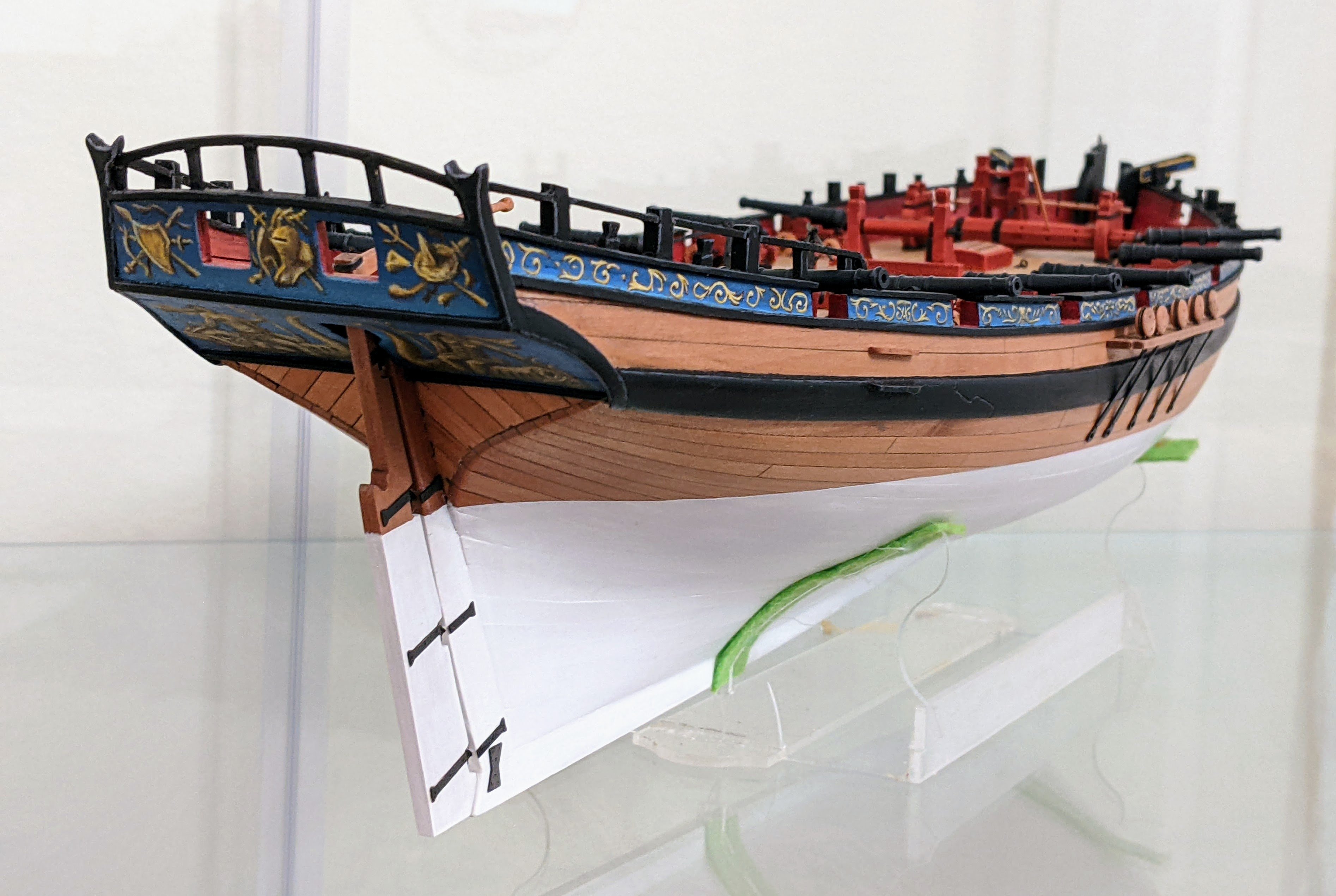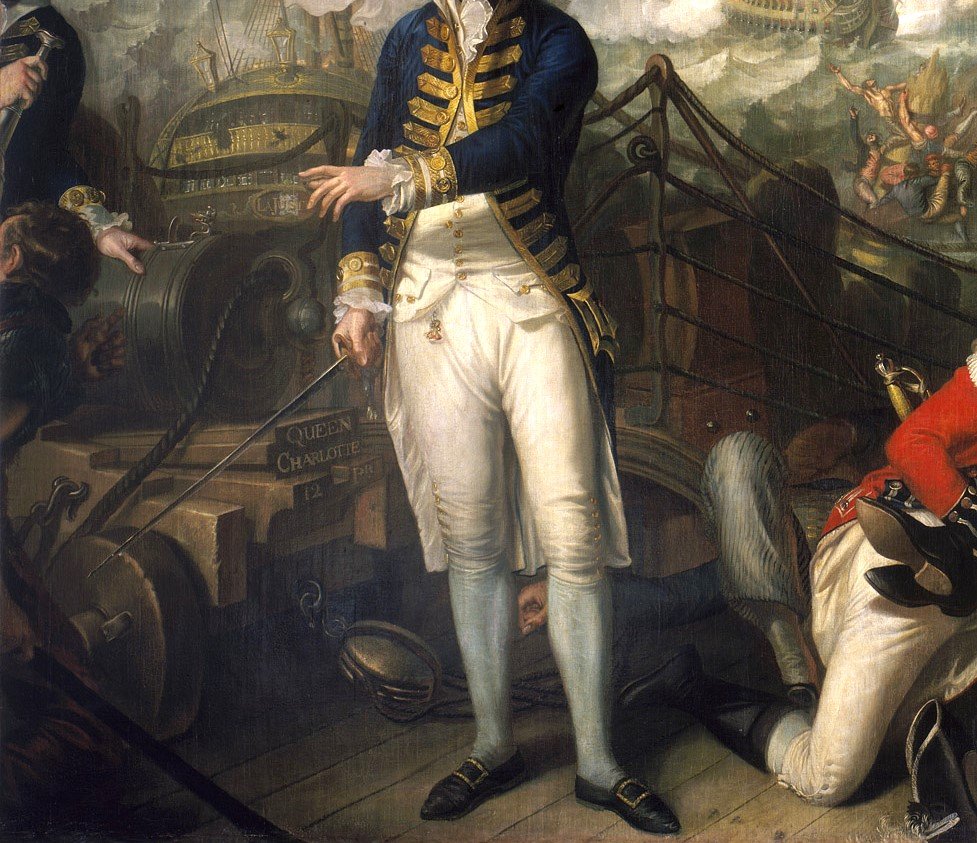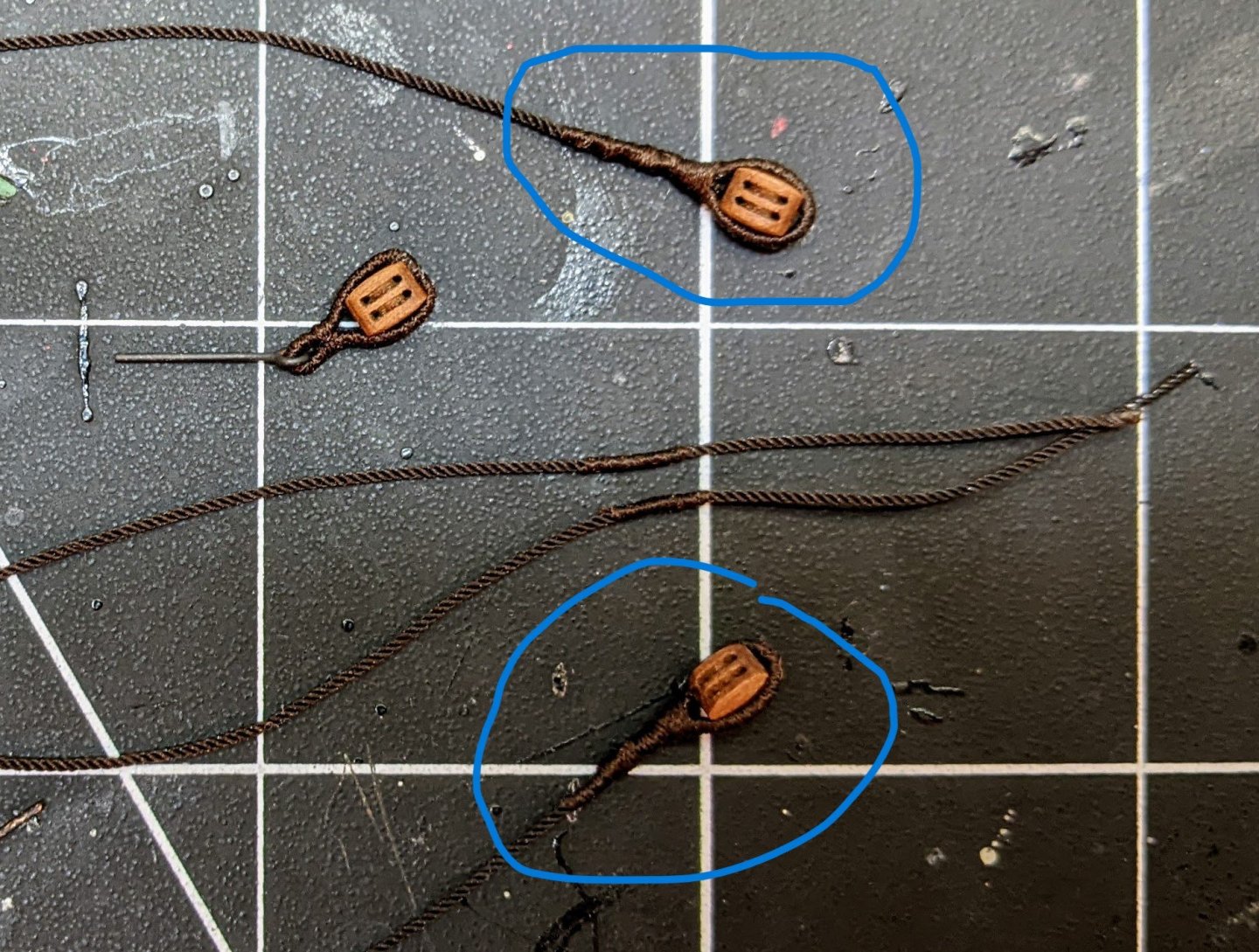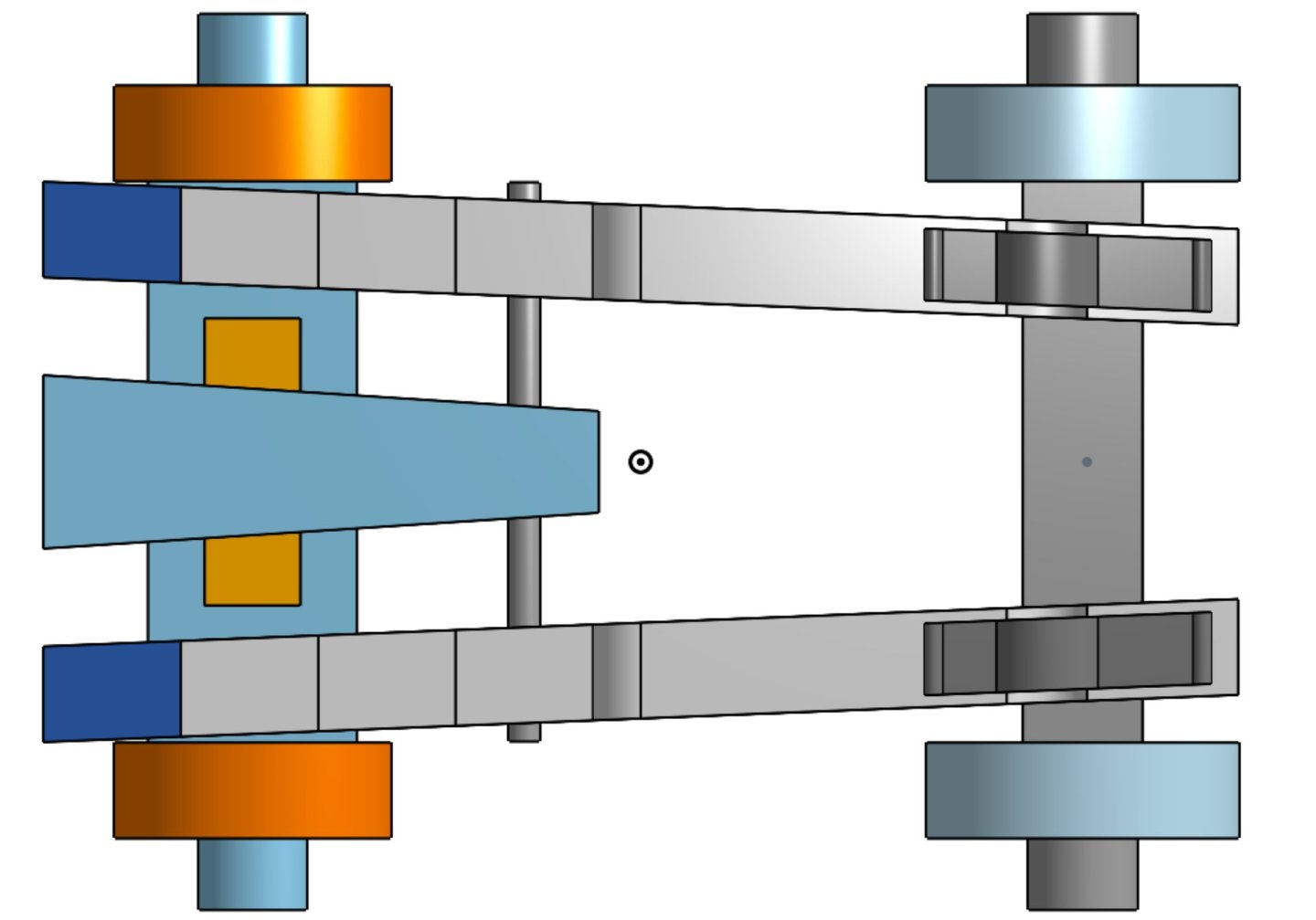-
Posts
1,324 -
Joined
-
Last visited
Content Type
Profiles
Forums
Gallery
Events
Everything posted by Thukydides
-

Painting question
Thukydides replied to jcurtis55's topic in Painting, finishing and weathering products and techniques
You certainly can do that. I personally just paint straight on the wood and then sand it smooth and then do so again and again until I have the finish I am looking for. If you do seal the wood then I would recommend using a primer before painting as it will adhere a little better. -
I am pretty sure I many cases it was canvas or potentially filled in with wood. There are lots of examples where they are painted red. So likely not hammocks. The example I saw which made me think had things attached around the other sides, not just the one you usually see the railing on.
-
I have never heard of this before though as you say it does sound plausible. I have recently been on a kick looking through contemporary marine paintings and I have vague memories of one painting I looked at having something odd about the fighting tops that stood out to me. I will try to go back through and see if I can find it again. Not really a help with this per say, but if you search 'bray album' at the RMG collections website there are a number of drawings of sailors carrying/stowing their hammocks which might be of some help is making them for your model.
-
Looking good. Uboats are a fun little builds. Are you planning on putting it in a seascape or just the sub?
-
This is one of those cases I think where you have to weigh the aesthetic considerations with historical accuracy. Too much randomness may potentially look a bit off. You might want to try gluing card paper planks on a section just to make sure you are happy with the look before committing to the wood. That being said I would say your plan sounds like a good one. If you want to make the variable widths more random you could split into more bands and/or potentially randomly adjust some of the widths so that they are say 75% of what you put on the ticks and then make another one in the band take up 25% more. What I mean by this is lets say you have a band of 4 planks and at the point you are measuring they are each 8mm if equally divided. Then you could make the first one 6mm, the second 8mm, the third 10mm, the fourth 8mm. So essentially you are still equally dividing up the band, just in a much more random way. Now obviously this is much more complicated than just using a planking fan, but it will probably get a more random look if that is what you want to achieve.
- 312 replies
-
- Chile
- Latin America
-
(and 6 more)
Tagged with:
-
Like many things in a build the instructions are basically showing you how to produce a reasonable model out of the box. There are many places such as this where you can make small adjustments to improve the model. Ultimately it is up to you (a model is a piece of art after all), but if you want to see an example you can look at my alert log where I detail how I did it.
- 177 replies
-
- Sherbourne
- vanguard models
-
(and 3 more)
Tagged with:
-
Nice job on the tiny served eyes. They are not easy to make look that good.
- 419 replies
-
- Victory Models
- Pegasus
-
(and 2 more)
Tagged with:
-
If all other avenues fail Masting and Rigging of English Ships of War by James Lees has the ratios. I believe there is somewhere on the forums where someone turned them into an excel sheet to calculate the sizes based on the size of your ship. However, I would recommend taking a close look at the plans from RMG as a starting point. Sometimes the mast and yard dimensions are written onto the plans. Check out the plans for all the other ships of the same class as some plans will have info others will not. You can also take a look at The Steel tables the following link has the 1781 numbers as well as the more detailed 1799 ones. https://www.goldenhind.ru/steel_en/ Good luck.
-
What colour are you planning on painting them? I have been looking through every contemporary deck painting I can find and my very unscientific survey has found approximately an equal split between yellow ocre and red ocre. In one case they even had both colours on the same ship. The gun deck ones were yellow and the forecastle chasers were red. It is always possible they were repainted in-between the two drawings, but they were dated very close together. In any case good to hear you are on the mend. Merry Christmas.
-
As you say it is somewhat subjective. The problem is that what might be a good thing for one person might be a downside for another. For example if you want to kitbash / super detail your model then in many cases all you are looking for is the main structural elements as you will end up replacing most other parts anyways. In such cases the extra costs associated with "better fittings" would be wasted on you. But I suspect that most people asking the question are doing so because they are relatively new to the hobby. Once someone has at least one major build under their belt they should know enough about what they want to answer the question themselves. If we then redefine "best" to mean good for a relative novice, we are really looking for something that allows them to complete the model out of the box without requiring additional fittings or materials. I would say this means the kit should have: Clear easy to follow instructions Laser cut materials that don't require the builder to scratch build many things Quality materials and fittings meaning that the purchase of 3rd party materials is not necessary
-
Great Job Mike. Alert is indeed a lovely model and you should be proud of her.
- 34 replies
-
- Alert
- Vanguard Models
-
(and 1 more)
Tagged with:
-
Great job, you can really see the progression as you have gotten more practice. Only thing I will mention is as your rope size changes you will also need to make sure the line you are serving with is appropriately sized (what you have looks great, I am just referring to if you serve smaller ropes). I had to go down to fly tying thread for some of my ropes (granted I was at a smaller scale than you). Yes a machine really helps. Good job on building it/ I also find that having some form of magnification is good. It allows you to more clearly see that the loops of the serving as you go particularly if you are serving smaller ropes. I just use some cheap glasses similar to these though you can use whatever ones work best for you / are easily available: https://www.amazon.ca/dp/B0D5LX2FG1/ref=sspa_dk_detail_4?pd_rd_i=B0D5LX2FG1&pd_rd_w=1XFVw&content-id=amzn1.sym.516c2169-755e-413a-a38a-68230f4ab66f&pf_rd_p=516c2169-755e-413a-a38a-68230f4ab66f&pf_rd_r=HR22QG8YS7AGKM1XNDFY&pd_rd_wg=ofXh7&pd_rd_r=75eec39e-7cea-4bea-8486-54a2f9768de1&s=kitchen&sp_csd=d2lkZ2V0TmFtZT1zcF9kZXRhaWw&th=1
-
Fantastic job Jacques. It has been a pleasure to follow along though I only joined late in the process. I always appreciate some good speculative research. I personally think that there is something very exciting about compiling what little info there is on lesser known subjects and bringing them to life. All in all a great build and a very informative build log.
- 286 replies
-
Log #13: A Research Rabbit Trail I have been casting my net a bit wider in an attempt to reconcile some of the issues we have been discussing here regarding gun carriages. As I mentioned one of the main goals with this log is to bring those of you following along on a journey through my research, I thought I would open the door a little on what this looks like for me on a practical level. Having exhausted (at least as far as I can tell for the moment) all of my leads that deal directly with guns and carriages, I decided to start looking for sources that might incidentally mention / show them. I started by searching for paintings from the period which depicted deck scenes. In doing so I came across the following very interesting painting (I have cropped it to the parts I am interested in and increased the exposure a little): The painting is of Lord Howe at the Battle of the Glorious First of June 1794. Now I have to do some more research to confirm this fact, but the RMG description says that the painter: This implies a degree of care and accuracy about the scene which makes it very interesting for research despite the fact it is about 15 years after the time period I am concerned with. In particular you can see the following interesting details about the gun: It appears to be a Bloomfield 12pdr based on the breeching loop and the label on the stool bed. The Queen Charlotte carried 12pdrs on her quarterdeck confirming this detail. The name of the ship is written on the quoin, this may be an extra embellishment added by the painter, but given the care he took to get everything just right it is possible this writing did exist on the gun. The carriage is painted a brown/yellow color similar to how the current carriages on the Victory are painted. This is in contrast to the bulwarks which can just be made out in the background as being a brownish red. The breeching rope appears to be hawser laid. The tackle at the rear of the gun is a double block. This matches what I have found in my research (12pdrs and up had single double combos), but runs counter to what Caruana says. It is a similar colour to the carriage. The strop for the block appears to be served. The stool bed has a slot which the quoin fits into allowing it to slide along. This makes a lot of sense to me from a practical perspective, but I have never seen this in any of the plans or other drawings. Edit: I also just noticed how the eyebolts are countersunk like the example Gregory posted. The next step is then to carefully go back through all the other primary documents/pictures/plans I have acquired to see if any of these details are mentioned or implied. Often I find when I go back I notice things that were just mentioned in passing that I missed the importance of. These other sources in combination with more research into the artist will allow me to judge how reliable I treat these details as being. Then comes the question of if there are accurate, do they also apply to the 1780s?
-
I also have seen that one. It is from Robertson's Mathematical Instruments. The carriage in question likely dates from somewhere between 1755-1766, but as carriages didn't change much from 1732 to 1787 (with the introduction of the Bloomfield gun) the dating is not super relevant. The funny thing with that one is that the top bracket (in the plan view) clearly has the steps perpendicular to the centerline, but the bottom it is less certain (though this may be due to distortion from the scanning). The Thorsminde example does seem to show the steps as perpendicular though it is pretty worn... I suspect your are correct, I would just like to be a bit more definitive than "suspect" :). The drawings in question I believe were all drawn in the early 1900s documenting the ship as she existed at the time right before they started a major restoration. One would imagine that the gun carriages would have changed little, but it is not definitive enough to make me comfortable. Most model examples I have found from the period seem to be perpendicular to the brackets (though it is hard to be sure from the pictures). That being said this is a pretty minor detail so it is not out of the question that they were just simplified when making the model. Thanks everyone for all the suggestions. I think I will have to do some more digging. Every now and again I find definitive answers, but so much of this research is sorting through numerous historical examples, evaluating them and then justifying the conclusions on the basis of preponderance of the evidence.
-
Check out the below plan from RMG (typical of my question). No date is given but based on the design I am pretty confident this is a mid to late 18th century carriage. I have labeled the elevation to indicate the parts I am talking about. The brackets are the big pieces that make up the sides of the carriage. Now if you look at the plan just to the right of this you can see that both the steps and the ends are drawn with straight vertical lines (perpendicular to the center line of the carriage). I have seen many plans that do this so this is by no means an oddity of just this drawing. I would have thought that the ends and the steps would have been at right angles to the brackets themselves as opposed to how they are shown on this drawing. My question is was this just a drawing convention or were the carriages actually constructed this way. This is partly where my confusion comes from. Modern redrawing of these plans (as exemplified by your example and also Caruana's redrawn plans in his book on English Sea Ordnance) seem to depict them at right angles to the brackets. I am trying to understand why contemporary examples seem to in almost all cases use one convention, but modern examples another. Hence why I am wondering if this was just a drafting shorthand that was done.
-
Looking really good, practice really does help with the rigging. If you would like a small suggestion, I believe the end would have been spliced into the rope and then the strop go over it. You can achieve this by doing a false splice (take a look at my alert log for some ideas), and then do the splice over top of it. I have also found some indications that many of these blocks would have been served all of the way round the block (though I have not really dug into this enough to be confident in this assertion). If you want to add that detail (completely up to you if you think it will add something), then the best way is to serve the length you need to get round the block leaving enough unserved end to do the false splice. Then you serve over the false splice bringing the whole thing together. See below for an example of what I mean:
-
Great job BE, I really like the modifications you are doing on this kit. Regarding the cable storage I had a similar question a while back (though it related to a Cruiser class vessel, I was considering building). There is no clear indication if it was shelves or walled off, if it extended down to the hold or not. I did ask the question and got a number of responses which though not completely satisfying may help you as you try to puzzle this one out. Post #28 has some analysis on the plans for the Argus which seem to show the cable tier as only going half way up the height of the deck so maybe the access was on the top?
- 332 replies
-
- Harpy
- Vanguard Models
-
(and 1 more)
Tagged with:
-
As we are nearing Christmas I thought I would give a final update before the new year. This will be a minor update as I don’t have a lot to show at the moment with Canada Post continuing to be on strike . That being said in the background I have continued to pick away at the research side of things. As can be seen in my previous post I have been attempting to draw up gun carriages. However, since that post my work has been complicated by the number of sometimes conflicting contemporary examples I have found. I am attempting to carefully work through them all to come to some conclusions. One thing I did discover (though it is not really surprising) is a primary source explicitly stating that the trucks and sometimes the brackets were modified in size to accommodate the differing heights of the ports on ships. This at least takes away the pressure of figuring out the exact dimensions of my carriages in the short term as I can safely build the ports as per the plans and then modify the heights of the carriages slightly if necessary. However, I have run into one oddity that I am wondering if anyone has any insight on. It is the question of the ends / steps of the brackets. Most contemporary examples I have found depict them as below with the steps / ends perpendicular to the centreline of the carriage (I say most as there are a few where it is unclear and though I have not run across an example which definitively does not folllow this convention, I have be no means looked at every available example out there): However, this seems a much more complicated way to construct them vs simply making the ends / steps perpendicular to the brackets themselves. Caruana’s redrawing of carriages seems to treat these ends/steps as perpendicular to the brackets themselves and it seemed odd to me that he would have done that for no reason. Does anyone have any insight into if this was just a drawing convention of the time or actual practice?
-
What I did is figure out which way it wants to twist and then twist the shroud a few times that way. That gives it tension which it wants to unwind from. It takes a bit of trial and error, but you can get them to line up right if you do that.
- 422 replies
-
- Vanguard Models
- Sphinx
-
(and 1 more)
Tagged with:
About us
Modelshipworld - Advancing Ship Modeling through Research
SSL Secured
Your security is important for us so this Website is SSL-Secured
NRG Mailing Address
Nautical Research Guild
237 South Lincoln Street
Westmont IL, 60559-1917
Model Ship World ® and the MSW logo are Registered Trademarks, and belong to the Nautical Research Guild (United States Patent and Trademark Office: No. 6,929,264 & No. 6,929,274, registered Dec. 20, 2022)
Helpful Links
About the NRG
If you enjoy building ship models that are historically accurate as well as beautiful, then The Nautical Research Guild (NRG) is just right for you.
The Guild is a non-profit educational organization whose mission is to “Advance Ship Modeling Through Research”. We provide support to our members in their efforts to raise the quality of their model ships.
The Nautical Research Guild has published our world-renowned quarterly magazine, The Nautical Research Journal, since 1955. The pages of the Journal are full of articles by accomplished ship modelers who show you how they create those exquisite details on their models, and by maritime historians who show you the correct details to build. The Journal is available in both print and digital editions. Go to the NRG web site (www.thenrg.org) to download a complimentary digital copy of the Journal. The NRG also publishes plan sets, books and compilations of back issues of the Journal and the former Ships in Scale and Model Ship Builder magazines.








